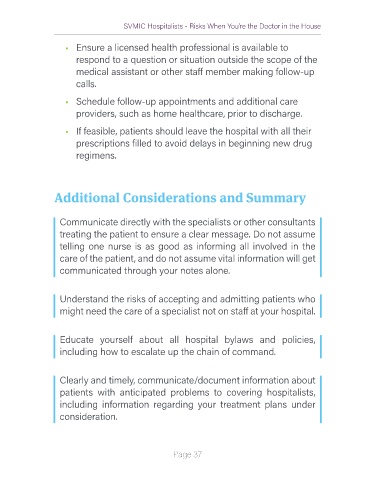Page 37 - Hospitalists - Risks When You're the Doctor in the House (Part Two)
P. 37
SVMIC Hospitalists - Risks When You’re the Doctor in the House
• Ensure a licensed health professional is available to
respond to a question or situation outside the scope of the
medical assistant or other staff member making follow-up
calls.
• Schedule follow-up appointments and additional care
providers, such as home healthcare, prior to discharge.
• If feasible, patients should leave the hospital with all their
prescriptions filled to avoid delays in beginning new drug
regimens.
Additional Considerations and Summary
Communicate directly with the specialists or other consultants
treating the patient to ensure a clear message. Do not assume
telling one nurse is as good as informing all involved in the
care of the patient, and do not assume vital information will get
communicated through your notes alone.
Understand the risks of accepting and admitting patients who
might need the care of a specialist not on staff at your hospital.
Educate yourself about all hospital bylaws and policies,
including how to escalate up the chain of command.
Clearly and timely, communicate/document information about
patients with anticipated problems to covering hospitalists,
including information regarding your treatment plans under
consideration.
Page 37

